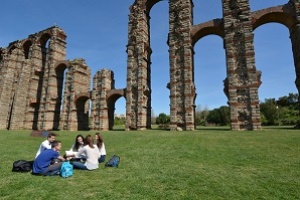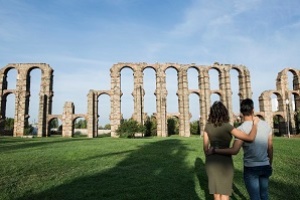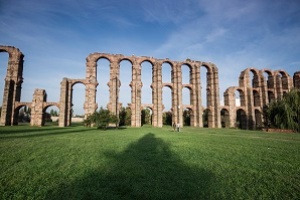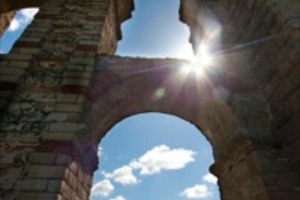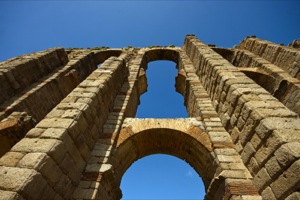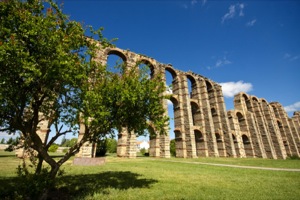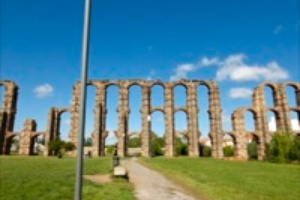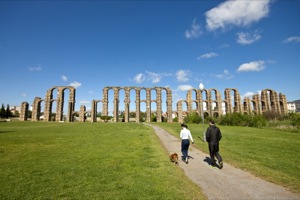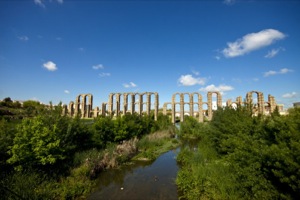Art and culture
Los Milagros Roman Aqueduct
This partially preserved massive aqueduct was one of the large works at Emerita Augusta for supplying water to the city.
- Explore
- Los Milagros Roman Aqueduct
A masterpiece of Roman engineering
Location and Contact:
- Contact person: Oficina de Turismo de Mérida
- Tel.:+34 924 33 07 22
- Email: info@turismomerida.org
- Website address: www.turismomerida.org
-
This partially preserved massive aqueduct was one of the large works at Emerita Augusta for supplying water to the city.
Mérida, called Emerita Augusta during Roman times, received water from the Proserpina reservoir, where we can still admire the Roman dam nowadays, through this colossal aqueduct that crossed the Albarregas River and led to the urban network.
It is known as the “Los Milagros” (Miracles) aqueduct on account of the admiration that its magnificence inspired in visitors. Nowadays, eight hundred metres of aqueduct are preserved, with columns that are up to twenty-seven metres high, on which white storks nest every year.
One of the singular factors of this construction is the combination of two materials: granite and red brick, that create a nice colour combination and that, as the story goes, were an inspiration for masterpieces of Hispanic-Moslem caliphal art.
The aqueduct is surrounded by an extensive area of greenery which is pleasant for walking and doing sports. Nearby, we can admire another Roman work, the bridge over the Albarregas River, which is not very long and has a nice dressed façade, which marked the northern exit from the city by the famous Silver Way. -
- Origin:
-
- Romanisation (BC)
- Construction:
-
- Aqueduct
- Art period:
-
- Romanisation
Gallery:
More suggestions
-
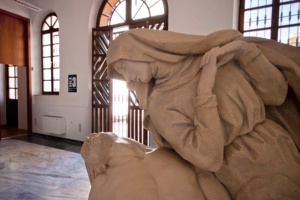
Museum of Mérida
The Museum of the Town of Mérida houses a collection on the Mérida-born sculptor and other pieces that take one on a route through the town's history.
-
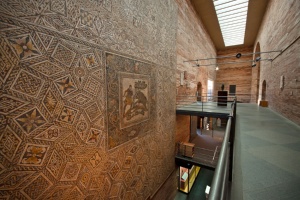
National Roman Art Museum in Mérida
The National Roman Art Museum (MNAR) shows the visitor different sides of daily life in the province of Hispania.
-
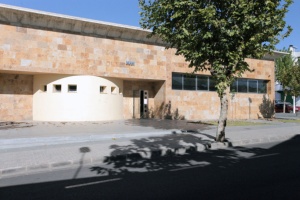
Extremadura Geology Museum
Its collection has made this museum one of the most important of its kind.
-
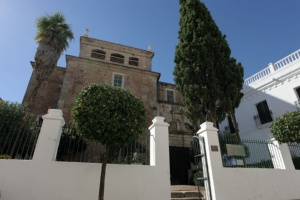
Museum of Visigoth Art and Culture
The collection of Visigoth pieces in this museum brings together relics from Mérida from the 4th-8th centuries, as the capital of the Diocesis Hispaniarum and as the metropolitan capital of the province of Lusitania
-
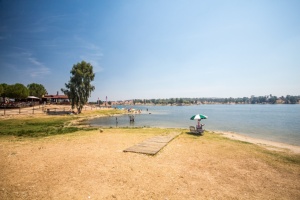
Proserpina reservoir
Proserpina reservoir, within easy reach of Mérida, dates back to Roman times and forms part of the region's archaeological ensemble, which has received the UNESCO World Heritage designation.
-
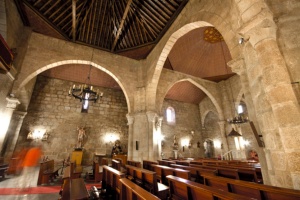
Basilica of Santa Eulalia
A space included in the archaeological complex of Mérida, and a showcase within the regional capital as it contains the town's patron.
-
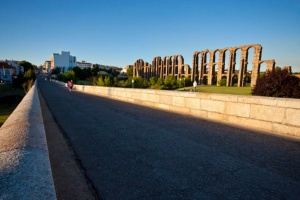
Roman bridge on the Albarregas River
Built when the Roman city of Emerita Augusta was founded, the bridge on the Albarregas River is still in perfect condition and includes some of its original features.
-
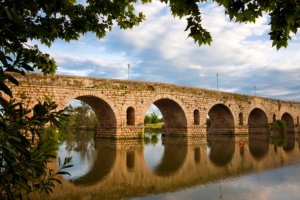
Roman bridge on the Guadiana River
In the city of Mérida, on one of the most shallow sections of the Guadiana River, we find a bridge built in the 1st century, at the same time as the foundation of Emerita Augusta. Thanks to its large size and features it is one of the most important Roman bridges in the Peninsula.
-
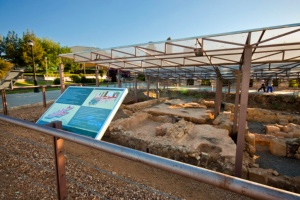
Remains of Roman thermae in Mérida
Without a doubt the capital of Extremadura is one of the region's enclaves with the most thermal bath constructions.
-
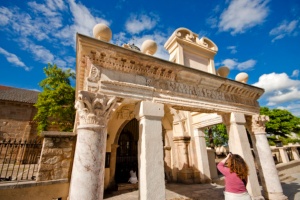
Remains of the Temple of Mars
The basilica of Santa Eulalia in Mérida contains the remains of the Roman temple of Mars in its atrium, known as "el hornito".

